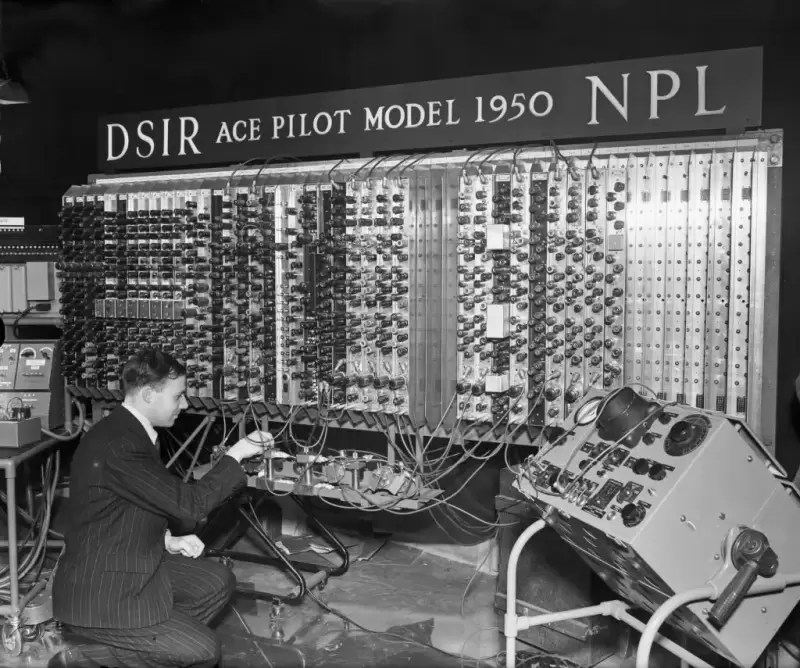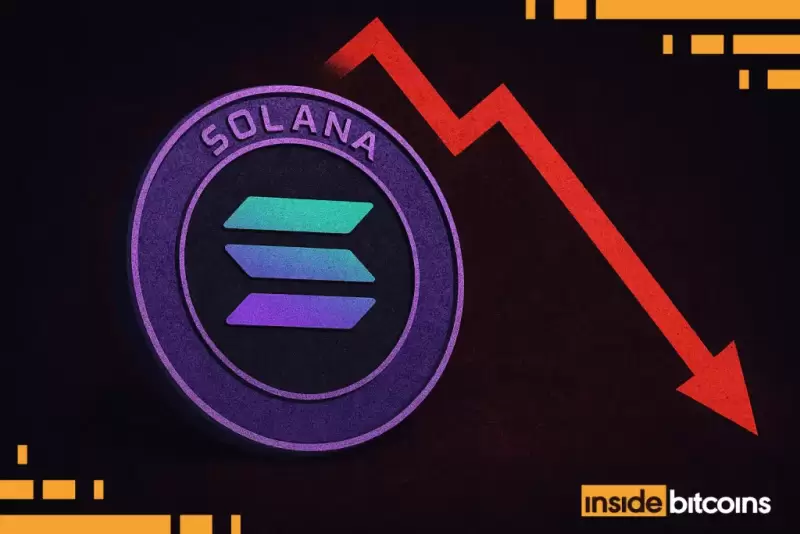 |
|
 |
|
 |
|
 |
|
 |
|
 |
|
 |
|
 |
|
 |
|
 |
|
 |
|
 |
|
 |
|
 |
|
 |
|
これは「私たちは何かを忘れた」という感覚ではなく、コアアーキテクチャの意味でです。実際のメモリ層はありません。

Web3 has a memory problem. Not in the “we forgot something” sense, but in the core architectural sense. It doesn’t have a real memory layer.
Web3にはメモリの問題があります。 「私たちは何かを忘れた」という意味ではなく、コアアーキテクチャの意味で。実際のメモリ層はありません。
Blockchains today don’t look completely alien compared to traditional computers, but a core foundational aspect of legacy computing is still missing: A memory layer built for decentralization that will support the next iteration of the internet.
今日のブロックチェーンは、従来のコンピューターに比べて完全に異質に見えませんが、レガシーコンピューティングの中心的な基礎的側面はまだありません。インターネットの次の反復をサポートする分散化のために構築されたメモリレイヤーです。
After World War II, John von Neumann laid out the architecture for modern computers. Every computer needs input and output, a CPU for control and arithmetic, and memory to store the latest version data, along with a “bus” to retrieve and update that data in the memory. Commonly known as RAM, this architecture has been the foundation of computing for decades.
第二次世界大戦後、ジョン・フォン・ノイマンは現代のコンピューターのアーキテクチャをレイアウトしました。すべてのコンピューターには、入力と出力、制御と算術用のCPU、およびメモリが最新バージョンデータを保存する必要があります。また、メモリ内のデータを取得および更新する「バス」が必要です。一般的にRAMとして知られているこのアーキテクチャは、何十年もの間、コンピューティングの基盤となっています。
At its core, Web3 is a decentralized computer — a “world computer.” At the higher layers, it’s fairly recognizable: operating systems (EVM, SVM) running on thousands of decentralized nodes, powering decentralized applications and protocols.
そのコアでは、Web3は分散型コンピューター、つまり「世界コンピューター」です。高層では、かなり認識できます。数千の分散ノードで実行されているオペレーティングシステム(EVM、SVM)は、分散型アプリケーションとプロトコルに動力を供給します。
But, when you dig deeper, something’s missing. The memory layer essential for storing, accessing and updating short-term and long term data, doesn’t look like the memory bus or memory unit von Neumann envisioned. Instead, it's a mashup of different best-effort approaches to achieve this purpose, and the results are overall messy, inefficient and hard to navigate.
しかし、より深く掘り下げると、何かが欠けています。短期および長期データの保存、アクセス、および更新に不可欠なメモリレイヤーは、想定されているメモリバスやメモリユニットのvon Neumannのようには見えません。代わりに、この目的を達成するためのさまざまなベストエフォルトアプローチのマッシュアップであり、結果は全体的に乱雑で、非効率的で、ナビゲートするのが難しいです。
Here’s the problem: if we’re going to build a world computer that’s fundamentally different from the von Neumann model, there better be a really good reason to do so. As of right now, Web3’s memory layer isn’t just different, it’s convoluted and inefficient. Transactions are slow. Storage is sluggish and costly. Scaling for mass adoption with this current approach is nigh impossible. And, that’s not what decentralization was supposed to be about.
問題は次のとおりです。VonNeumannモデルと根本的に異なる世界コンピューターを構築する場合、そうすることは本当に良い理由があります。現在のところ、Web3のメモリレイヤーは単に異なるだけでなく、複雑で非効率的です。トランザクションは遅いです。ストレージは遅く、コストがかかります。この現在のアプローチで大量採用のためのスケーリングは不可能です。そして、それは地方分権化が想定されていたものではありません。
But there is another way. A lot of people in this space are trying their best to work around this limitation and we're at a point now where the current workaround solutions just cannot keep up. This is where using algebraic coding, which makes use of equations to represent data for efficiency, resilience and flexibility, comes in.
しかし、別の方法があります。この分野の多くの人々は、この制限を回避するために最善を尽くしています。私たちは今、現在の回避策ソリューションが追いつくことができない時点にいます。これは、方程式を使用して効率、回復力、柔軟性のためのデータを表現する代数コーディングを使用する場所です。
The core problem is this: how do we implement decentralized code for Web3?
コアの問題はこれです:Web3の分散コードをどのように実装しますか?
This is why I took the leap from academia where I held the role of MIT NEC Chair and Professor of Software Science and Engineering to dedicate myself and a team of experts in advancing high-performance memory for Web3. I saw something bigger: the potential to redefine how we think about computing in a decentralized world.
これが、MIT NECの議長とソフトウェア科学とエンジニアリングの教授の役割を担って、自分自身とWeb3の高性能記憶を前進させる専門家チームを捧げるために、私がアカデミアから飛躍した理由です。私はもっと大きなものを見ました。分散型の世界でのコンピューティングについてどのように考えているかを再定義する可能性です。
My team at Optimum is creating decentralized memory that works like a dedicated computer. Our approach is powered by Random Linear Network Coding (RLNC), a technology developed in my MIT lab over nearly two decades. It’s a proven data coding method that maximizes throughput and resilience in high-reliability networks from industrial systems to the internet.
Optimumの私のチームは、専用のコンピューターのように機能する分散メモリを作成することです。私たちのアプローチは、20年近くにわたってMITラボで開発された技術であるランダムリニアネットワークコーディング(RLNC)を搭載しています。これは、産業システムからインターネットまでの高解放性ネットワークのスループットと回復力を最大化する実績のあるデータコーディング方法です。
Data coding is the process of converting information from one format to another for efficient storage, transmission or processing. Data coding has been around for decades and there are many iterations of it in use in networks today. RLNC is the modern approach to data coding built specifically for decentralized computing. This scheme transforms data into packets for transmission across a network of nodes, ensuring high speed and efficiency.
データコーディングは、効率的なストレージ、送信、または処理のために、ある形式から別の形式に情報を変換するプロセスです。データコーディングは何十年も前から存在しており、今日のネットワークで使用されている多くの反復があります。 RLNCは、分散コンピューティング専用に構築されたデータコーディングに対する最新のアプローチです。このスキームは、データをノードのネットワーク全体で送信するためのパケットに変換し、高速と効率を確保します。
With multiple engineering awards from top global institutions, more than 80 patents, and numerous real-world deployments, RLNC is not only a theory but a tested and proven technology. It has received recognition such as the 2009 IEEE Communications Society and Information Theory Society Joint Paper Award for the work "A Random Linear Network Coding Approach to Multicast." RLNC's broader impact was acknowledged with the IEEE Koji Kobayashi Computers and Communications Award in 2022.
トップグローバル機関からの複数のエンジニアリング賞、80を超える特許、および多数の現実世界の展開により、RLNCは理論であるだけでなく、テスト済みの実績のあるテクノロジーです。 2009年のIEEE通信協会および情報理論協会共同紙「マルチキャストへのランダムな線形ネットワークコーディングアプローチ」などの認識を受けています。 RLNCのより広範な影響は、2022年にIEEE Koji Kobayashi Computers and Communications Awardで認められました。
Now, RLNC is ready for decentralized systems, enabling faster data propagation, efficient storage, and real-time access, making it a key solution for Web3’s scalability and efficiency challenges.
現在、RLNCは分散型システムの準備ができており、データの伝播、効率的なストレージ、リアルタイムアクセスをより高速化できるようになり、Web3のスケーラビリティと効率の課題の重要なソリューションとなっています。
Let’s take a step back. Why does all of this matter? Because we need memory for the world computer that’s not just decentralized but also efficient, scalable and reliable.
一歩下がってみましょう。なぜこのすべてが問題になるのですか?分散化されているだけでなく、効率的で、スケーラブルで信頼性が高い世界コンピューターにはメモリが必要だからです。
Currently, blockchains rely on best-effort, ad hoc solutions that achieve partially what memory in high-performance computing does. What they lack is a unified memory layer that encompasses both the memory bus for data propagation and the RAM for data storage and access.
現在、ブロックチェーンは、高性能コンピューティングのメモリが部分的にどのようなメモリを実現する、ベストエフォルトのアドホックソリューションに依存しています。それらに欠けているのは、データの伝播のためのメモリバスとデータストレージとアクセスのためのRAMの両方を含む統一されたメモリ層です。
The bus part of the computer should not become the bottleneck, as it does now. Let me explain.
コンピューターのバス部分は、今のようにボトルネックになるべきではありません。説明させてください。
“Gossip” is the common method for data propagation in blockchain networks. It is a peer-to-peer communication protocol in which nodes exchange information with random peers to spread data across the network. In its current implementation, it struggles at scale.
「ゴシップ」は、ブロックチェーンネットワークにおけるデータ伝播の一般的な方法です。これは、ノードがランダムなピアと情報を交換して、ネットワーク全体にデータを拡散するピアツーピア通信プロトコルです。現在の実装では、大規模に苦労しています。
Imagine you need 10 pieces of information from neighbors who repeat what they’ve heard. As you speak to them, at first you get new information. But as you approach nine out of 10, the chance of hearing something new from a neighbor drops,
聞いたことを繰り返す隣人からの10個の情報が必要だと想像してください。あなたが彼らに話すとき、最初は新しい情報を取得します。しかし、あなたが10のうち9つに近づくと、隣人から新しいものを聞く可能性があります、
免責事項:info@kdj.com
提供される情報は取引に関するアドバイスではありません。 kdj.com は、この記事で提供される情報に基づいて行われた投資に対して一切の責任を負いません。暗号通貨は変動性が高いため、十分な調査を行った上で慎重に投資することを強くお勧めします。
このウェブサイトで使用されているコンテンツが著作権を侵害していると思われる場合は、直ちに当社 (info@kdj.com) までご連絡ください。速やかに削除させていただきます。
-

-

-

- nft NewsFlash
- 2025-04-05 04:35:12
- 現在のビットコイン価格は$ 82K、ETHは$ 1.8K、XRPは2ドルです:https://tinyurl.com/4w5m5cfe
-

-

-

-

- Cosmos(Atom)トークンは、10%近くの利益でディップに反対します
- 2025-04-05 04:25:12
- ビットコインと暗号市場は、米国大統領ドナルドトランプの関税発表に応じて価格修正に見舞われました
-

-




























































